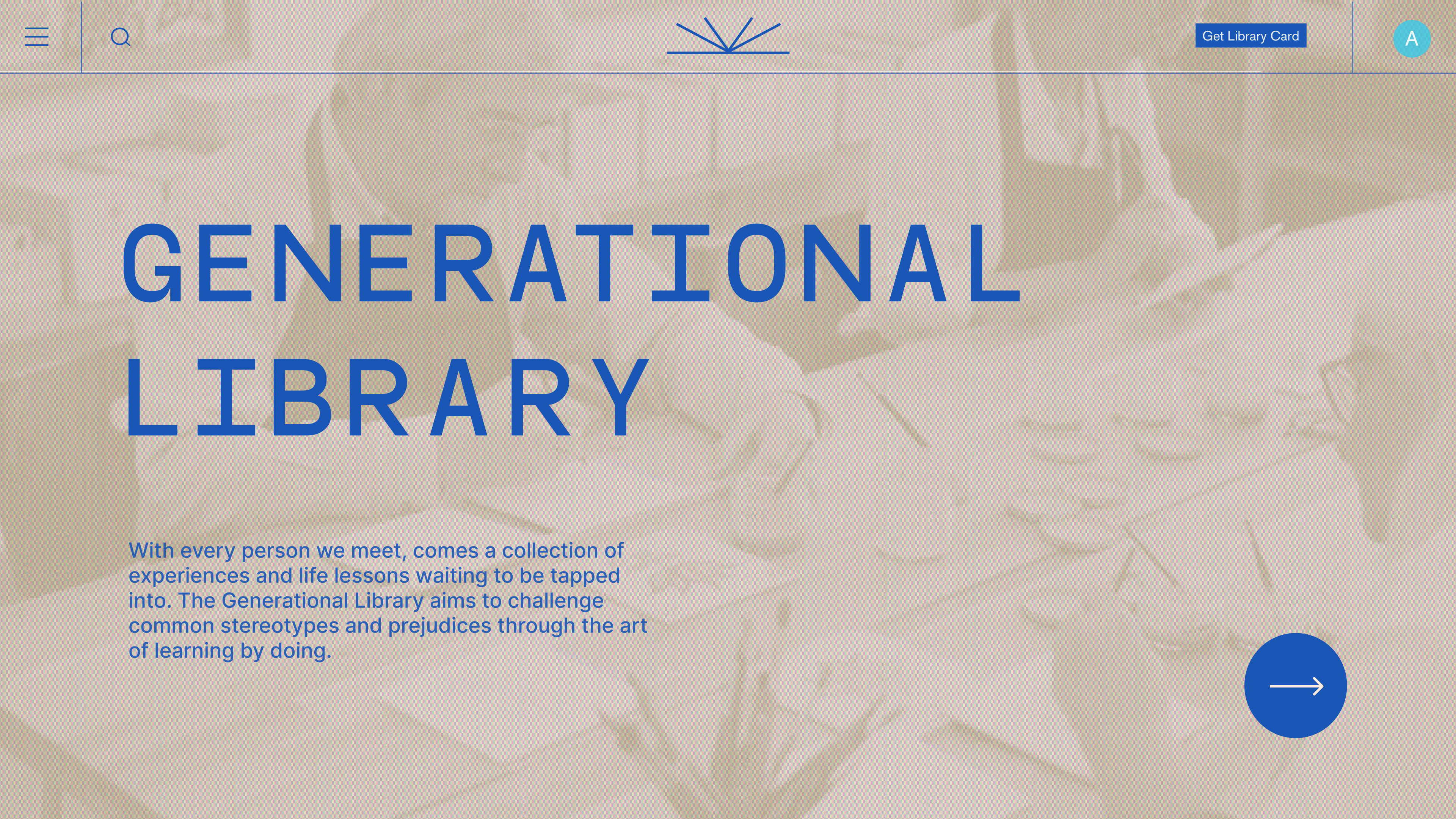Overview
The Generational Library is a proposed community/cultural organization that aims to faciliate and redefine intergenerational relationships as part of an exercise to consider a reality with new world values to encourage new kinds of understandings. In this redefined realm, the libary acts as a physical space for people of all ages to "check out" human books, participate in activities (i.e cooking or drawing) and engage in conversations
In order to help our audience better imagine what this concept could look like, a website and collection of physical assets were created to convey the different touchpoints people may have with the library. Click me to see the intervention.
Concept Ideation and Research
To begin this speculative design process, our team was first tasked with researching a contemporary issue that interested us to see how we could use design as a tool to challenge established preconeived notions. Based on our groups shared passion for intergenerational relationships, we chose to explore this realm.
One aspect that stood out for us is that while (as current university students) we rarely interact with those outside our group, we had all come to cherish and value the relationships we had as children with our grandparents, aunts, uncles and other family friends of all ages in our past. With this project, we thus aimed to uncover ways and surface understandings for how these same intergenerational relationships can be emulated with those outside our family.
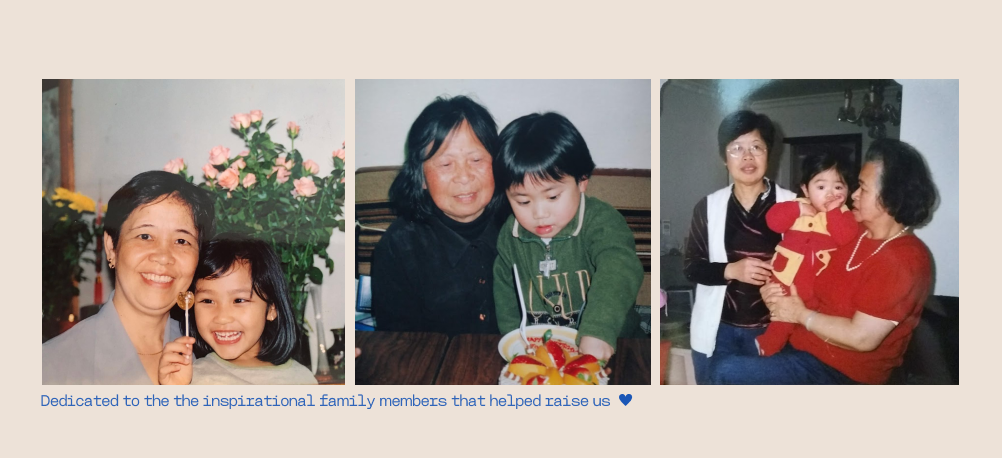
The Importance of Intergenerational Relationships
Through our initial research, it became clear that intergenerational relationships served to create a foundation for success in early life and is a key to future happiness and well-being. The Youth and Elderly in particular were seen to be the ones that were most likely impacted due to financial, emotional, mental and physical limitations as well.
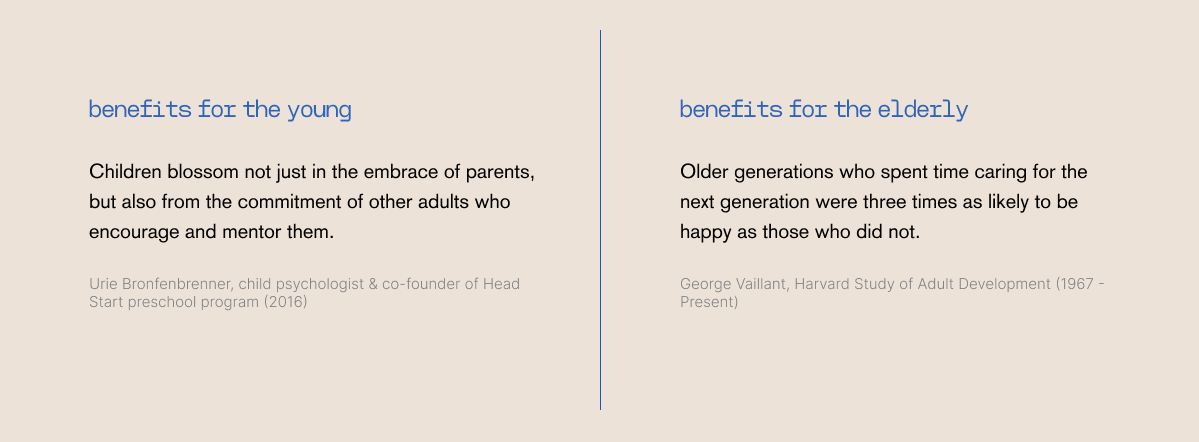
Surfacing the Invisibles
In order to gain a better understanding for what prevents intergenerational relationships from existing, we analyzed our research to uncover what invisble social structures helped keep this issue in place. Three key factors and it's consequences were surfaced that formed the problematic cycle.
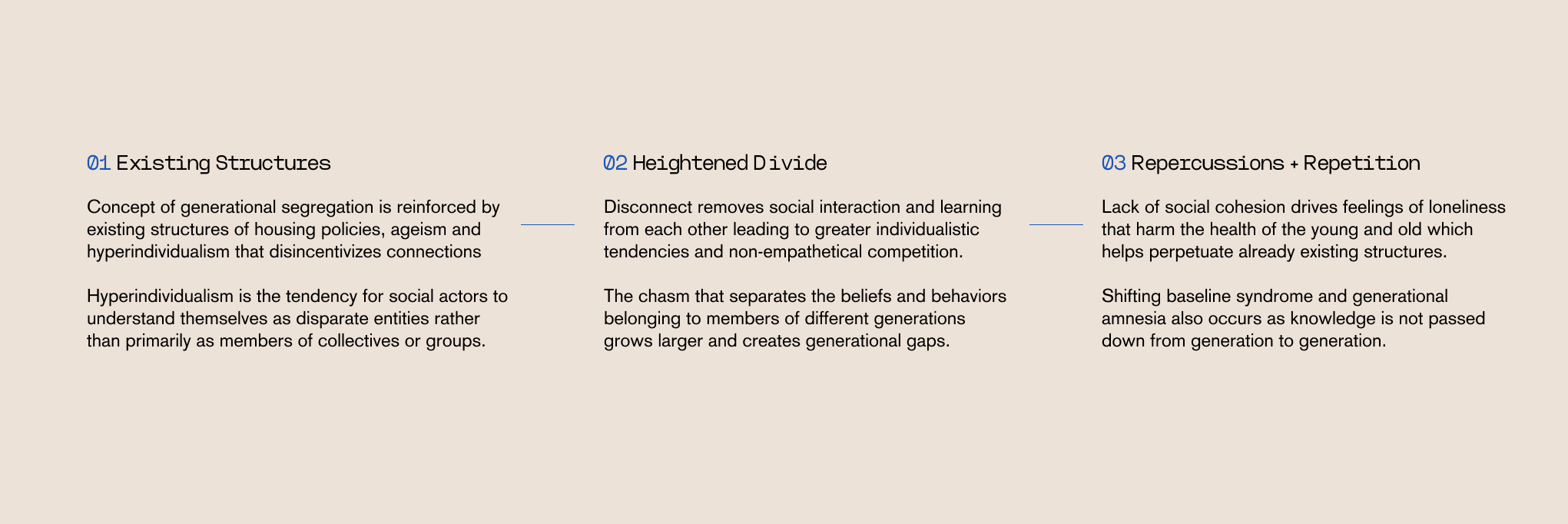
Taking into account these invisibles, we investigated the possible areas of intervention we could explore. To faciliate this process, we dove back into our research and developed a series of leading questions that would be used to frame our approach. After a rapid brainstorming session where we generated as many leading questions as possible, we grouped all of our queries before finalizing on our main 4.
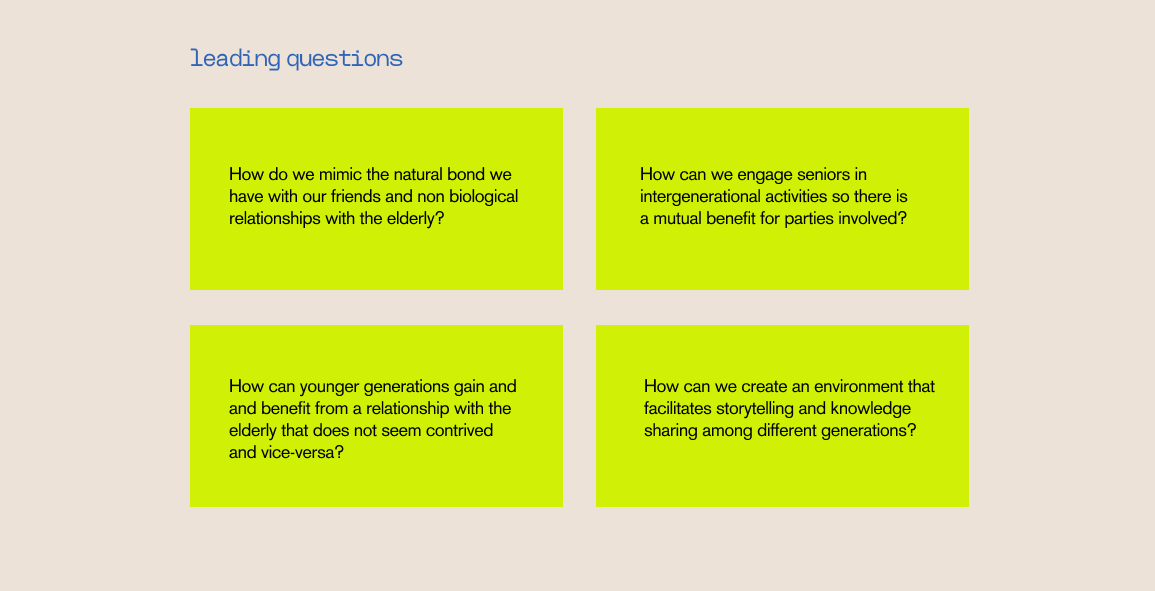
Our Critique and Framing
With our invisibles, leading questions and background research in mind, we took a final step back to affirm what our exploration hoped to uncover; our "if so, then what"?
Considering the barriers for generational relationships (due to hyperindividualism and advances in technology) despite our innate human social characteristics, we formed the framing below hoping to explore how the sharing of personal experiences and knowledge can be a facilitator for stronger communal bonds.
“
In a world where mutual dependency between generations is front and centre, how might our relationships and understanding of each other change? Can there be more to our perceptions of intergenerational values besides an acknowledgement of age?”
Implementing the Design
When conceptualizing Generational Libraries, we imagined it would be a in-person space acting as a natural evolution of existing libraries (that traditionally changes based on public needs) with physical and digital touchpoints as a way to facilitate interactions. In order to visualize this layout, an offerings flow for both realms was created by myself and then iterated on with the rest of the team.
For this intervention, I was mainly responsible for creating the Events Page and helping with the UI and interactions and within the microsite.
Generational Library: The Digital Experience
Human Book Collection
Human books provide summaries of an individuals life story and relevant interests where users can then book follow up in-person sessions for further knowledge sharing.
Events
If you are preferring wide group activities or a chance to share your interests and bond with more people, the events page allows users to access community events hosted by the library.
Digital Journal
After participating in a library session or event, users gain access to a digital journal where they can memorialize their experience. Physical copies are also available in-person.
Generational Library: The Physical Experience
Each physical asset (although distinct) serves support each other and the digital experience depending on where the user is on their journey within the library ecosystem. The poster acts as a call to action notifying people to the Generational Library's location and website while also hinting to the library's mission of challenging preconceived notions.
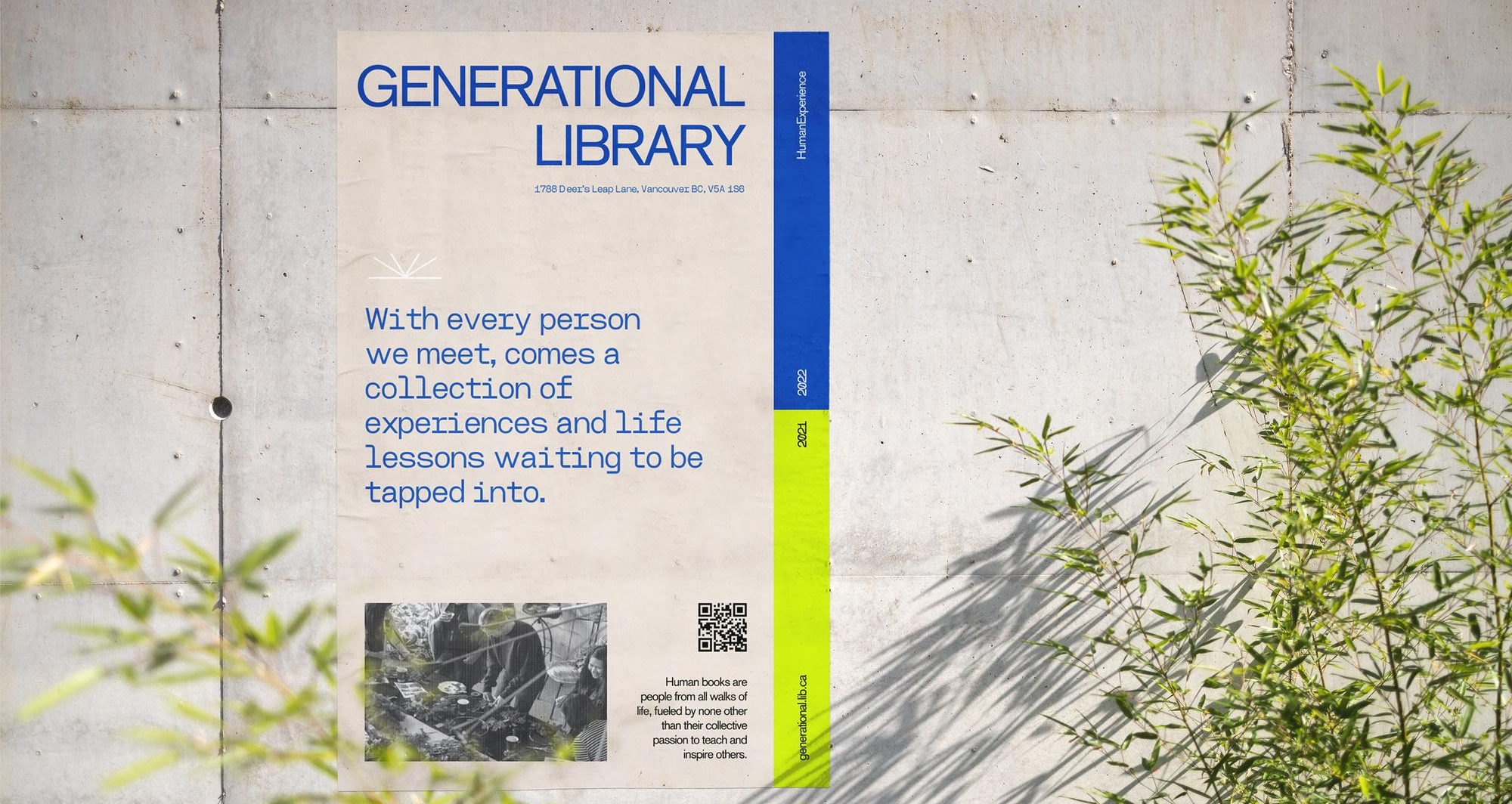
Upon arriving to the library, new users will then be presented with an onboarding brochure that briefs them on the offerings of the branch and how they can participate. Within the brochure itself is the library card. Representing one's personal interests and general library ID, individuals can use their card to access the on-site materials, facilities and engage in peer-to-peer interactions.
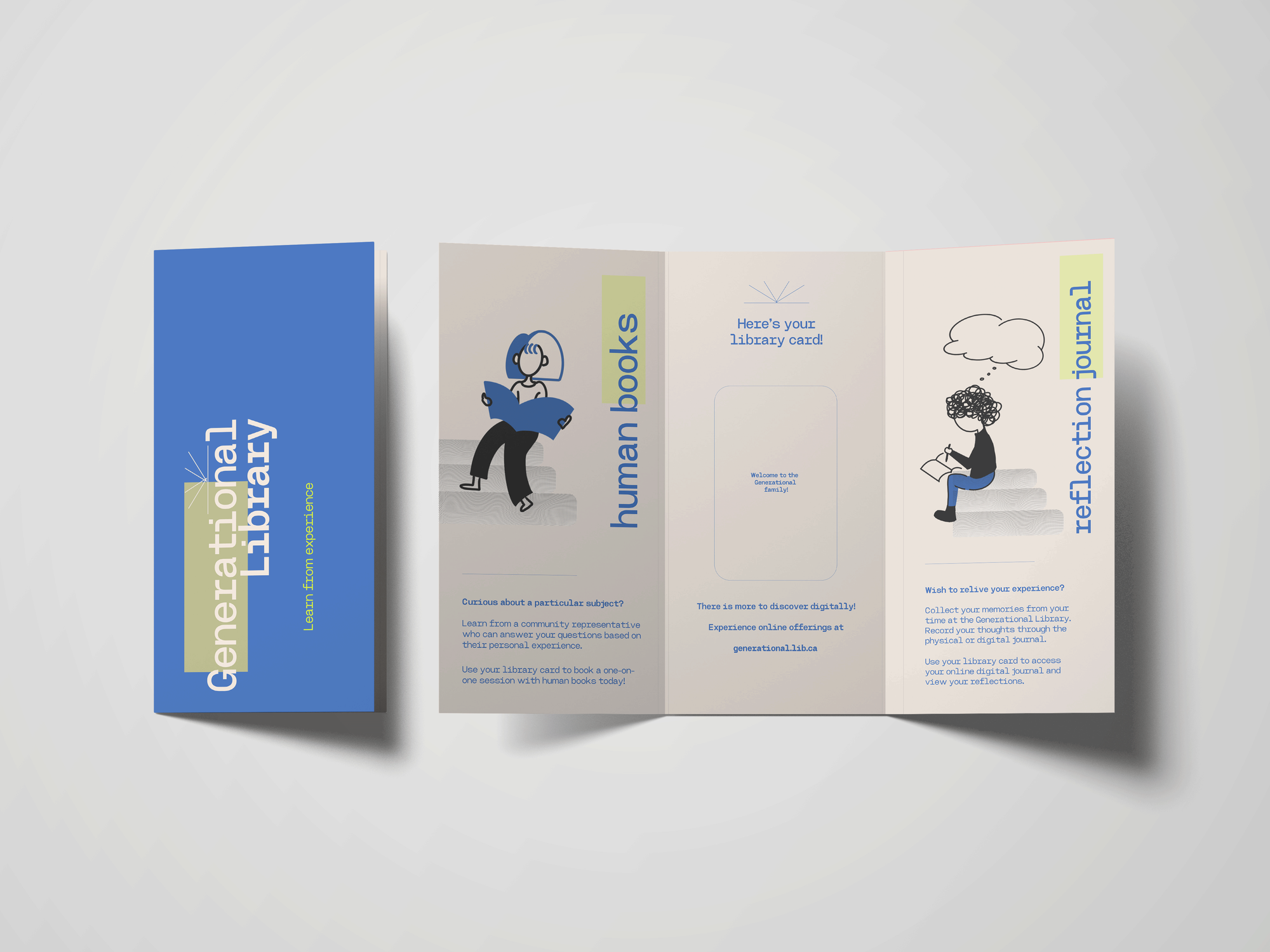
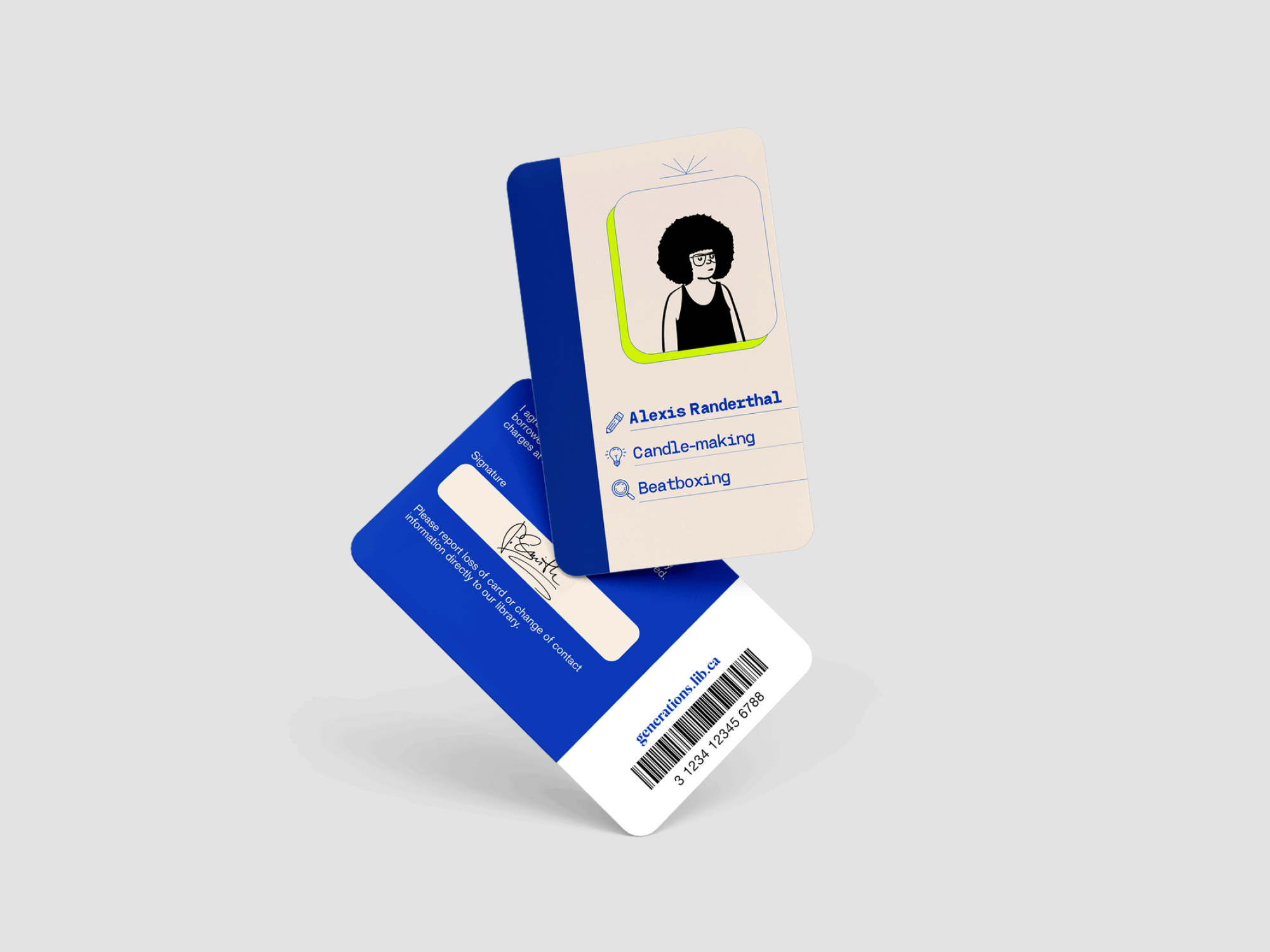
Forming the Art Direction
To establish the visual tone for both the digital and physical assets, we aimed to stay true to the core themes of the library: a casual, safe haven that anyone can go to. As we imagined that these spaces (in such a world) will be we a common place to go for recreation and informative needs, we took special care to represent this harmonious weaving of generations.
This was done through type as we chose an analog yet futuristic inspired header font in "Unnamed" to express the bond of the young and old. A simple sans-serif in "Basic Commercial LT Com" was selected as a pair to ensure there is legibility for all audience members.
For colour, we utilized a neutral pallette with accents of neon yellow and blue to communicate energy, brightness and youth. Finally, a textured layer (inspired by printed catalogues) was incorporated as a means to display the authenticity of the different people and experiences within the library.
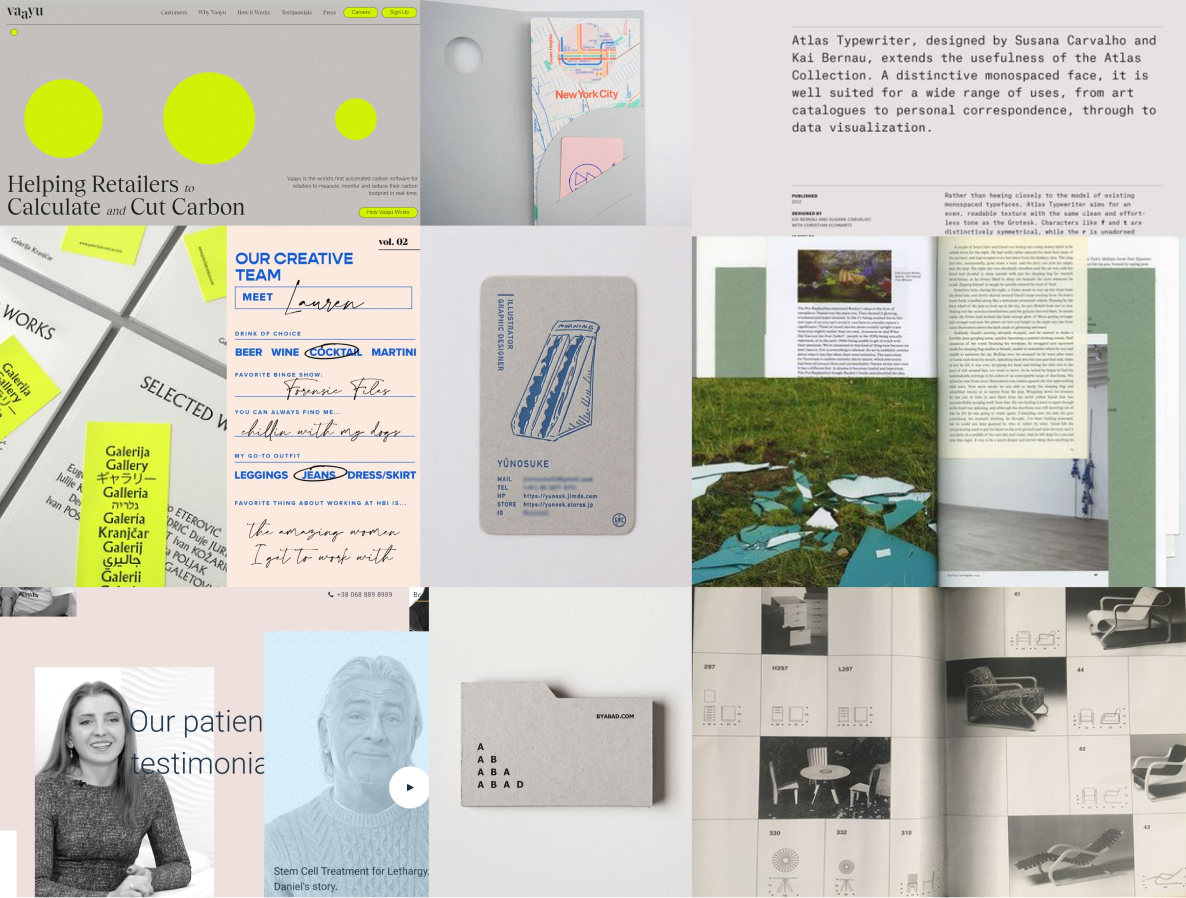
My Final Thoughts
Having come into this course with no real understanding of what "Speculative Design" truly meant, the process was —to say the least— confusing. Despite this, the project has not only given me a new perspective on how to approach design as a whole, but also how I view the world; there are invisibles everywhere that hold things in place and it's part of our duty as designers and people to seek them out.
I can wholeheartedly say the 7 weeks of this project was not only an eye opening experience, but a heart warming one too as it was a joy to be able to work with this team and share ideas and conversations about this topic together. To see our compiled takeaways (on slide 14) or if you're interested in the rest of the process click me for our annotated workbook!
